The projects we want to sew can range from quilts to embroidery, handbags to pillows, and everything in between. This article focuses on sewing terms that are most often associated with garment sewing, but may be used or called for in other projects as well.
Note: This is Part 2 of our General Sewing Terms series. See Part 1.
Clipping
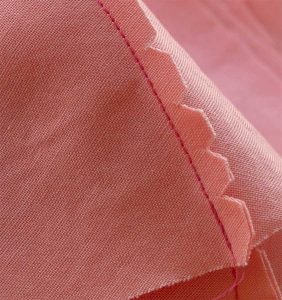 Clipping (the twin sibling to notching) is the practice of cutting fabric in the seam allowance of outside corners and curves and inside corners and curves. As with most practices, there are different schools of thought. Let’s take these one at a time.
Clipping (the twin sibling to notching) is the practice of cutting fabric in the seam allowance of outside corners and curves and inside corners and curves. As with most practices, there are different schools of thought. Let’s take these one at a time.
Outside corners, like the corner on a collar or the edge of a waistband, need special attention if you want to achieve a nice sharp corner once they have been turned. There are generally two camps on this:
- Clip off the corner point seam allowance close to the stitching line. Perhaps the seam allowance at either side of the point as well. This will reduce the bulk and allow the point to turn more sharply.
- Leave the seam allowance as is and fold it inward along the seam allowance. Turn to the right side leaving the fabric in place. Those who prefer this method will say that close clipping weakens the fabric at the turn point too much while the folding method maintains the strength of the garment piece at the corner.
Inside corners, like those found on a square neckline, need to be clipped close into the corner, up to (not through) the stitching line. This can be a bit nerve-wracking, but if you don’t get very close to the stitching line, the corner with not turn smoothly. So, take a deep breath, and clip right to that line before you turn to get a sharp, smooth corner.
Outside curves, such as the curve of a scalloped edge, need fabric in the seam allowance removed to allow the fabric to curve and lay flat once it is turned. An outer curve will turn much more smoothly if the seam allowance is clipped with notches. This provides a gap of fabric that can collapse without bunching on the inside.
Inside Curves, like a curved jewel neckline, will turn best if you clip into the fabric close to the stitching line. As with outside corners, there are multiple camps on how to do this:
- Clip through both layers of the seam allowance about every 1/2” the entire length of the curve. Tighter curves will turn more smoothly if the distance is closer to 1/ 4” apart so make the clips as close together as needed to achieve a smooth result.
- Clip through one seam allowance at a time. The distance between clips is the same as option 1. However, the location of the clips on each side of the seam allowance alternates, never making the clips on one side of the seam allowance in the same location as the opposing side. Those who prefer this method will say that it results in a smoother transition and less show through on the right side of the garment.
Heather Handmade created this short video to that hat this clipping process might look like:
Darts
Darts are triangular stitched pinches of fabric that help turn the 2-D nature of fabric into 3-D. You find them at the chest line to create space for your bust, at the waist to create the shape of your hips, and in the bottom of purses and bags to create space for the things you will store inside. Any place in your project that needs to be shaped instead of flat, you just might need to add a dart.
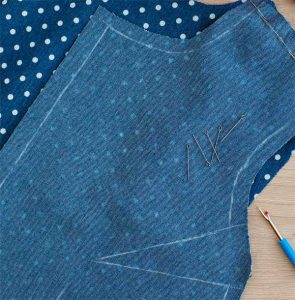 Darts can be straight or curved. They may be open ended and terminate into the seam allowance or they may be inside the body of the project with a point at both ends, referred to as a fish-eye dart.
Darts can be straight or curved. They may be open ended and terminate into the seam allowance or they may be inside the body of the project with a point at both ends, referred to as a fish-eye dart.
Here are a few tips that may be helpful as you increase your understanding of how to sew them:
- It is important to secure the ends of a dart. That can be done in various ways such as:
- Leave a long thread tail and tie a double knot before trimming the thread.
- Reduce the stitch length to 1.0 at the beginning and end of the dart.
- Make a small clip into the seam allowance at the termination of each leg of the dart. When making the dart fold, simply align the two clips.
- If the dart has straight legs, mark the points of the dart then using your ruler connect the dots to mark the dart location.
- Align the dart lines and secure them with pins or basting to be sure they stay in alignment when sewing the permanent stitching. On way to do this is with a ladder stitch. Watch this “How To” video to see what we mean.
- And finally, be intentional about pressing your darts once they are sewn. Avoid pressing beyond the point of the dart. If you press a fold into your fabric beyond the point, that fold might not disappear, leaving a permanent line that you don’t want.
Ease
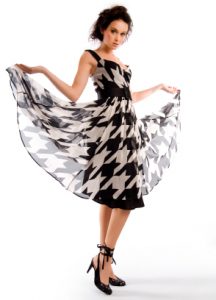 In its simplest form, ease is the additional room in a garment in excess of the actual body measurement. There is much more to ease than this simple definition though — there is wearing ease, design ease and negative ease. Each of these impacts the finished measurement of a garment in different ways.
In its simplest form, ease is the additional room in a garment in excess of the actual body measurement. There is much more to ease than this simple definition though — there is wearing ease, design ease and negative ease. Each of these impacts the finished measurement of a garment in different ways.
- Wearing ease provides ease of movement. It is the difference between the actual body measurement and the finished garment measurement.
- Design ease provides the style. It is also referred to as style ease or fashion ease. It is additional ease added beyond what is needed for movement to create specific styles ranging from close fitting to very loose-fitting garments. It also comes into play when the design of the garment includes things like pleats, gathers, or tucks.
- Negative ease is associated with fabrics that stretch (such as knits or woven fabrics with lycra added) or are cut on the bias, producing a certain degree of stretch. In this case, the finished garment measures the same as the actual body measurements, or more often, even smaller. The degree of stretch produced in each fabric plays a big role in how much negative ease a garment will need for good fit. Negative ease is used in garments like activewear and swimwear.
To read more about ease, check out this article we published on the topic.
Facing
A facing is a piece of fabric used to finish the raw edges of a garment at open areas, such as the neck and armholes. A facing may be a separate pattern piece to be added to the garment or an extension of the pattern piece itself.
Here are a few tips for applying them:
- Cut your facing on the same grainline as the edge to be faced.
- Grade the seam allowances to reduce bulk and show through on the right side of the garment.
- Don’t forget to finish the outer edges of the facing. The finish can be as simple as a turned-under edge, a zigzag, or a serged edge. If you are working with a fabric like knit that does not ravel, or with a garment that will be lined, you can skip this step.
- To hold the seam allowance in place on the inside of the garment, stitch the facing to the seam allowance at about 1/8 in. from the seam line. This is called understitching.
- Tacking the facing down at the seams will prevent them from flipping to the outside. Just hand stitch or stitch in the ditch of outer seams to accomplish this.
- Be sure to apply the appropriate interfacing to the facing fabric to give it the stability and structure needed for a smooth look.
Interfacing
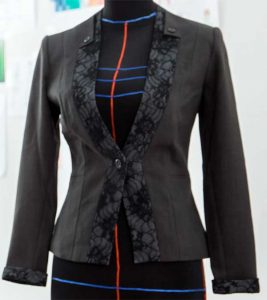 Interfacing is used to add extra body or strength to the fabric it is applied to. It is used in garment pieces like button bands, collars, waistbands, cuffs, and most facings. If you are sewing with knit, you might use interfacing to keep the fabric from stretching out of shape in a particular area of the garment.
Interfacing is used to add extra body or strength to the fabric it is applied to. It is used in garment pieces like button bands, collars, waistbands, cuffs, and most facings. If you are sewing with knit, you might use interfacing to keep the fabric from stretching out of shape in a particular area of the garment.
A few decisions you will make when choosing the right interfacing for your project include:
- Fusible vs. Non-Fusible
- Fusible interfacings use glue and are applied to the wrong side of the fabric with steam and an iron whereas a non-fusible interfacing is sewn into place. If your fabric doesn’t like heat or is woven so loosely that the glue might show through, you will want to want to use a non-fusible interfacing
- Light, Medium, or Heavyweight
- Your goal is usually to stabilize, not change, the fabric, so go with a weight that is equal to, or a bit lighter than, your fabric.
- Non-woven, Woven or Knit
- Non-woven interfacing doesn’t have a grain and works for most projects. It tends to be less expensive and can be cut in any direction. However, it can create a slightly “stiffer” outcome than woven interfacing as it does not have grain like the fabric does.
- Woven interfacing has a grain, much like fabric. It must be cut on grain the same way you cut your fabric. It tends to result in a drape and hand more like the fabric.
- Knit interfacing has a bit of stretch and is usually the best choice for knit fabrics.
In every case, it is important that you test your interfacing choice on a test swatch to be sure you achieve the look and feel you want.
Stay Stitching
Stay stitching is a single line of stitching through one layer of fabric slightly inside the seam allowance. Unlike basting, these stitches will not be removed so be careful not to stray beyond the seam allowance. Its purpose is to stabilize the fabric and prevent it from becoming stretched or distorted. It is usually called for on the edge of a piece of fabric that has a bias cut, which occurs on curves, such as necklines and arm holes, and on diagonals, such as v-necks.
Stay stitching should be done directionally to keep the shape of the fabric the same as it was when you cut it out. For example, when stay stitching a neckline, you should stitch from each shoulder to the center of the neckline. If you were to sew the entire neckline in one direction, you may distort the half sewn from the center neck to the shoulder.
See this 2 ½ minute video by Professor Pincushion showing this technique:
Note that not all pattern instructions will tell you to stay stitch so use your judgment. When in doubt, stay stitch.
Now that you understand some of the basic garment sewing terms, but these terms are so foundational and can impact your results so much. We hope these explanations have helped you strengthen that foundation.
~Sheryl Belson, ASG





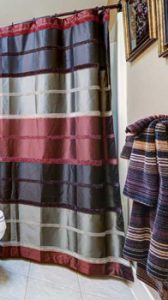 Nothing’s more fun than sprucing up your home and as sewers, a little refresh is easy to do. So, why not start in the bathroom with a fun fabric shower curtain!
Nothing’s more fun than sprucing up your home and as sewers, a little refresh is easy to do. So, why not start in the bathroom with a fun fabric shower curtain!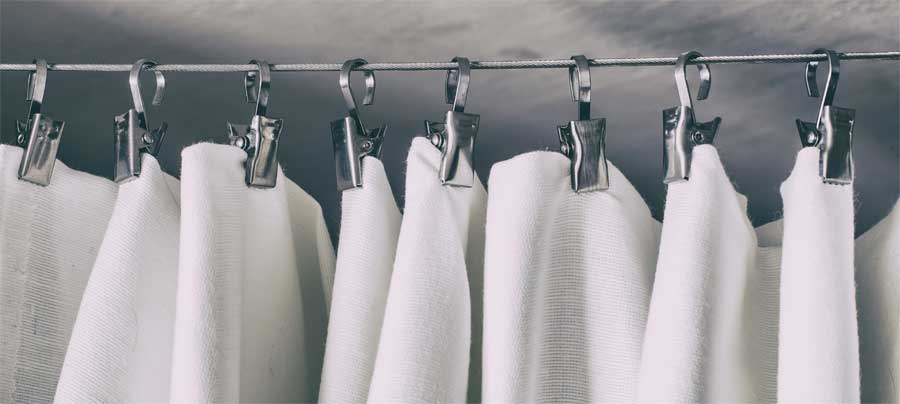
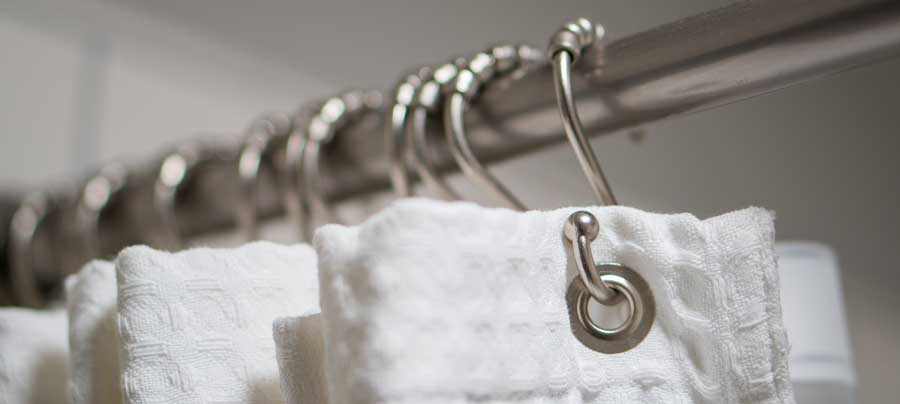
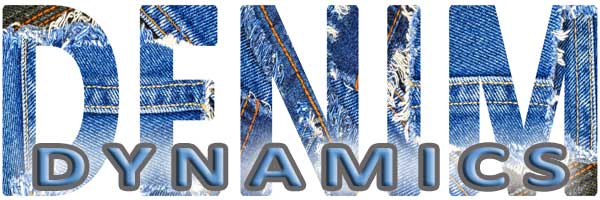
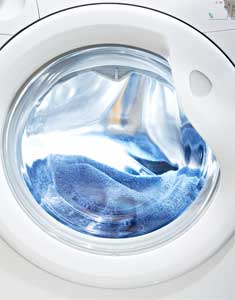 No doubt about it, denim shrinks, so pre-wash and dry it at least once. Wash it alone or with similar colors to prevent dye transfer.
No doubt about it, denim shrinks, so pre-wash and dry it at least once. Wash it alone or with similar colors to prevent dye transfer.
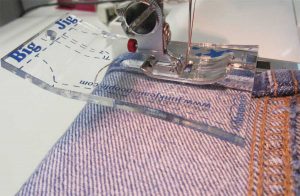
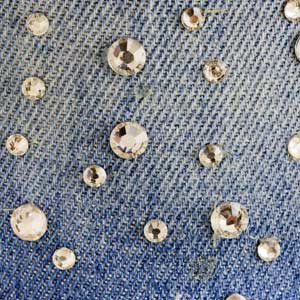 Rhinestones and nail heads make perfect embellishments to add bling to your favorite blues. Look for the easy iron-on version for quick application.
Rhinestones and nail heads make perfect embellishments to add bling to your favorite blues. Look for the easy iron-on version for quick application.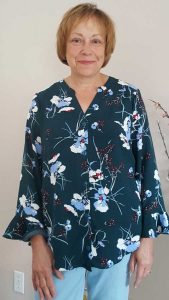
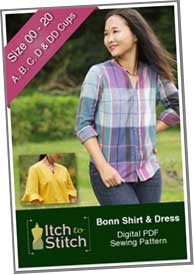
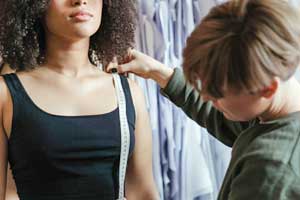 We’ve all done it. You cut that precious fabric, and you cut it wrong. Once you’ve made that cut, you can’t undo it. And now you don’t have enough to recover from your mistake. ARGH! Whether taking body measurements, marking seam allowances, or cutting quilt squares, when we sew, we need to measure accurately every time if we want our project to come out correctly.
We’ve all done it. You cut that precious fabric, and you cut it wrong. Once you’ve made that cut, you can’t undo it. And now you don’t have enough to recover from your mistake. ARGH! Whether taking body measurements, marking seam allowances, or cutting quilt squares, when we sew, we need to measure accurately every time if we want our project to come out correctly.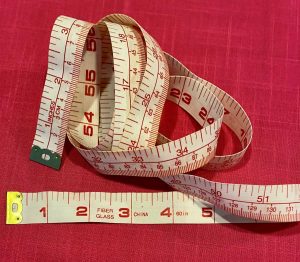
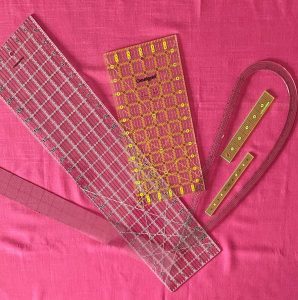

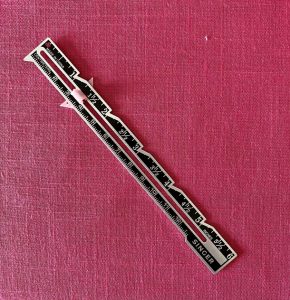
 If you do choose to add some new tools to your sewing box, don’t forget to check the Member’s Only
If you do choose to add some new tools to your sewing box, don’t forget to check the Member’s Only 